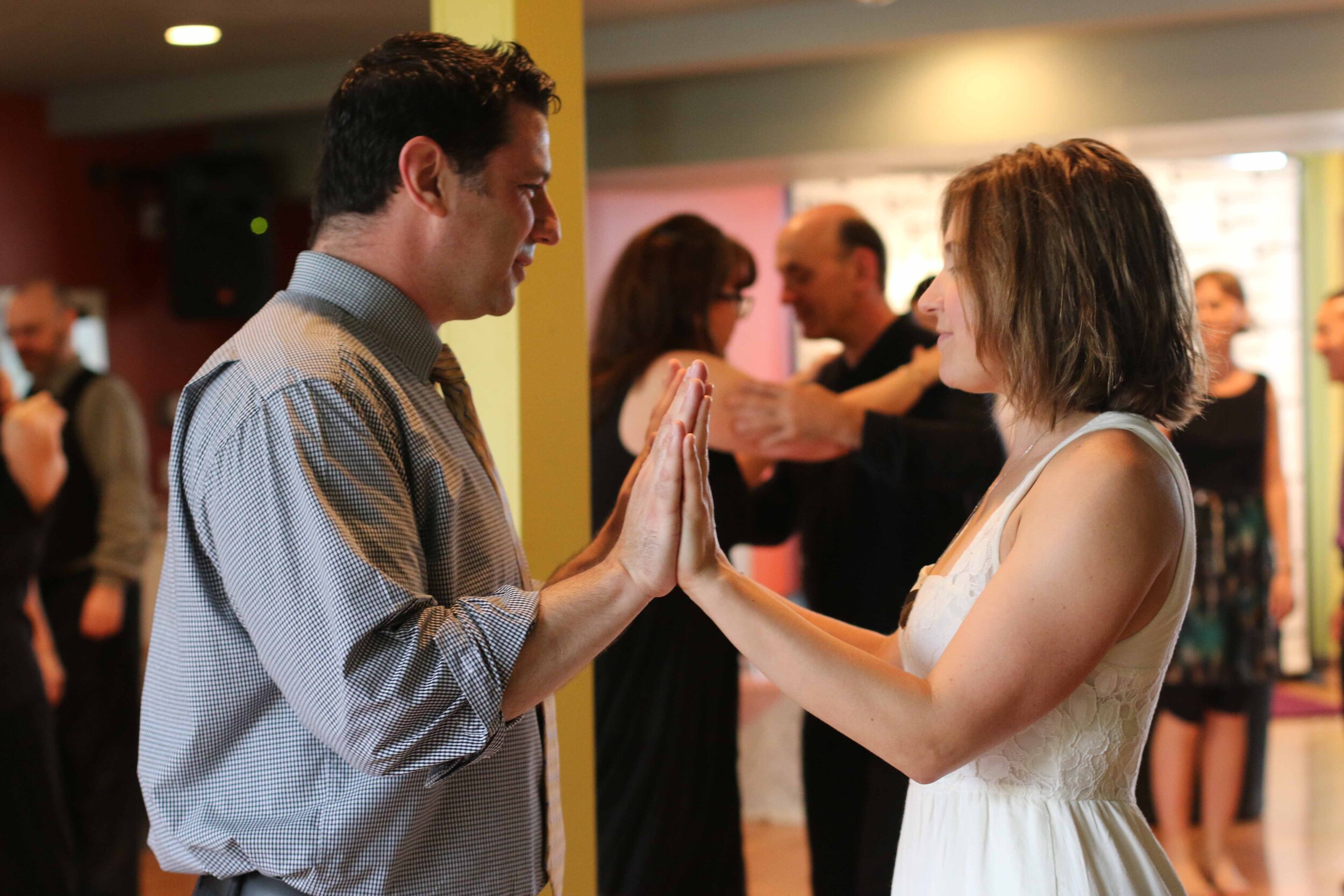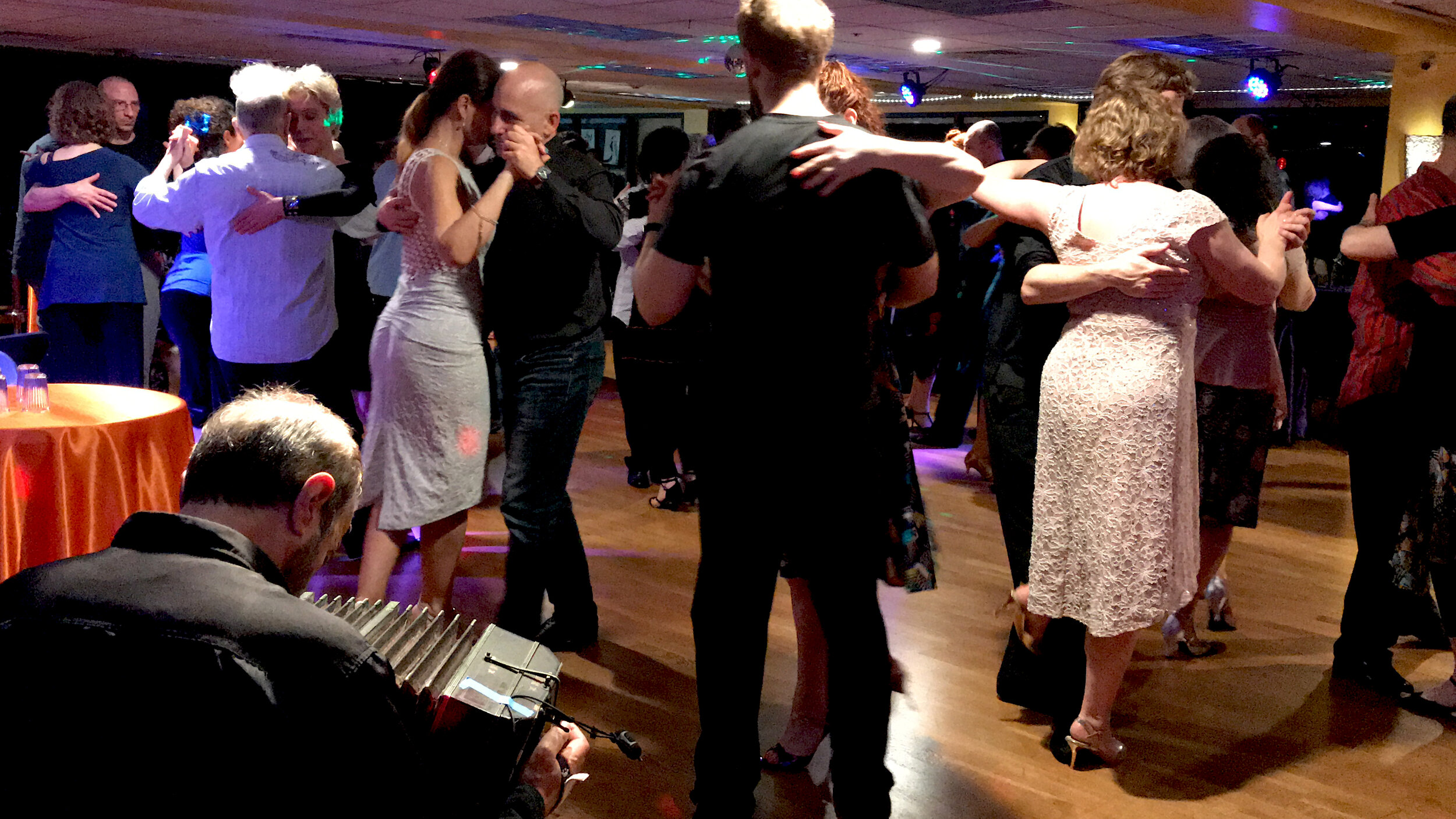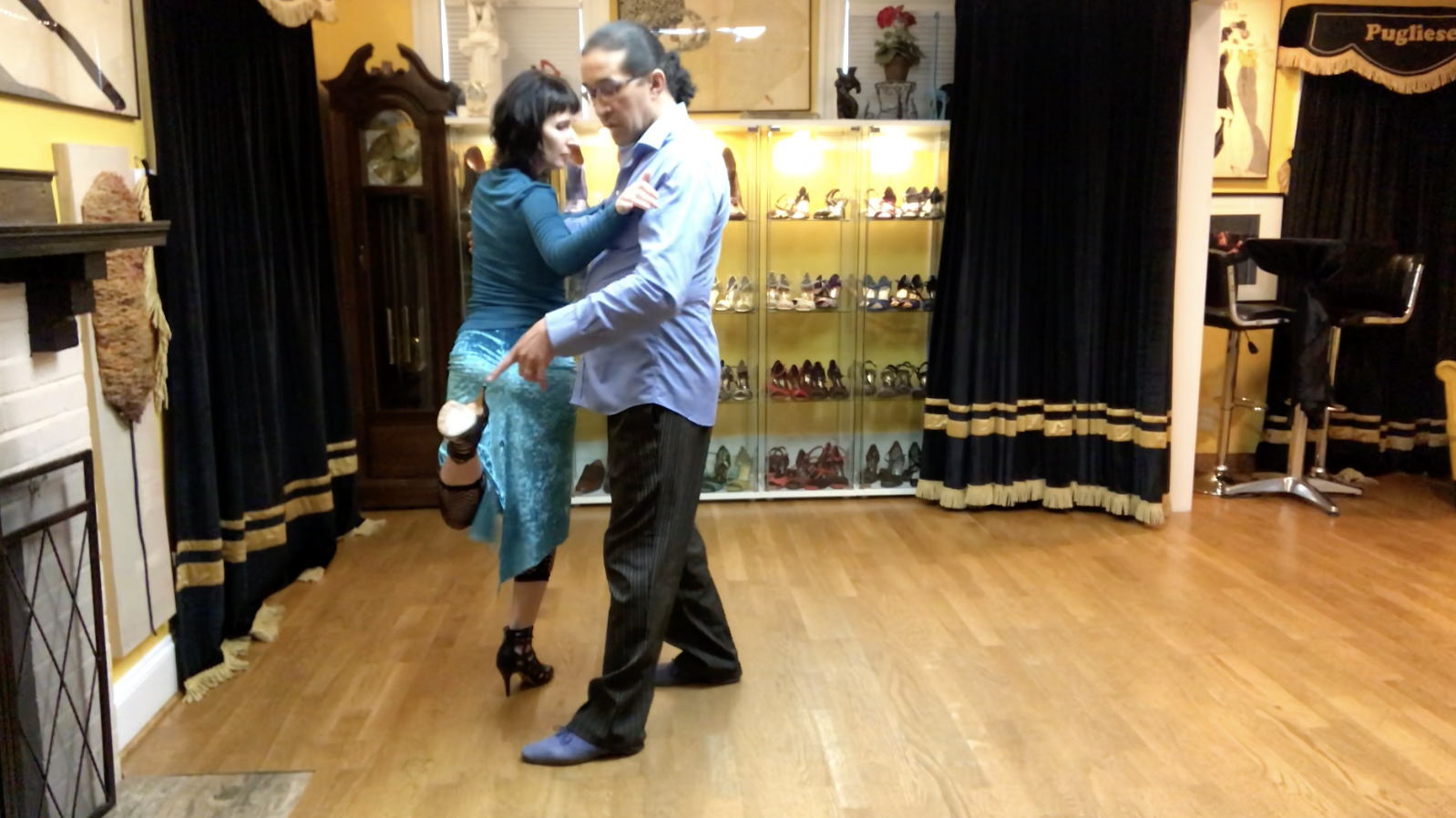The forms of Tango are like stages of a marriage. The American Tango is like the beginning of a love affair when you are both very romantic and on your best behavior. The Argentine Tango is the next stage when you are in the heat of passion and all kinds of emotions consume you. The International Tango is like the end of the marriage when you are staying together for the sake of the children.
Read MoreThere’s always something inherently exciting about trying out a beginner course, and tango lessons are no exception. Many aspiring tangueros and tangueras would rush to tango classes with little to no knowledge about what to expect. On the one hand, this kind of attitude keeps one’s excitement intact, especially for those who are rather fond of surprises. On the other hand, not knowing anything about Argentine tango before taking beginner tango lessons may lead to some measure of disappointment in the long run.
Read MoreAesthetically speaking, tango is a beautiful dance. Not only is this evident in how tangueros and tangueras dress, but in the movements themselves.
Read MoreElegance and sophistication are exhibited by both partners. Thus, for tango to be beautiful, the dancers must also feel beautiful — which is what many women tend to feel, whether they lead or follow.
When asked about why they are addicted to Tango, self-proclaimed Tango addicts have a myriad of intriguing responses. Some answered that it was because of the interaction with the opposite sex. Another referred to Tango as his "quasi-religion" and described it as the artistic expression and freedom he needed to cope with all the order and humdrum of his daily life. One even compared Tango to fishing as a form of meditation.
Read MoreMore than just a dance, tango is an art form, a combination of substance and style — and one cannot exist without the other on the dance floor.
Its fluid, sensual movements make up the tango’s substance, with its lively, vigorous motions providing stylistic appeal. Tango is more than its movements, though.
Read MoreWhen encountering the term axis, one would likely associate it with the rotation of planets or variables in mathematics. In studying tango, however, one would be surprised to know that axis is a recurring term, with the concept playing a significant role in both balance and movement.
Read MoreLa Cumparsita is widely viewed as the anthem of tango music. Originally composed by Gerardo Hernan Matos Rodriguez in 1917, the 100th anniversary of La Cumparsita was marked by tango concerts and all sorts of tributes in 2017.
Read MoreBecause of its ability to tug at the heartstrings, whether one encounters the original or revised lyrics, it would not be surprising at all if La Cumparsita remains popular for another hundred years or more.
In the sphere of Argentine tango, Newton’s Third Law can very much apply to the interactions shared by both leaders and followers, wherein each one gives and receives “force.” However, this term should not be mistaken as having the intention to coerce or intimidate. Rather, the concept of “force” in Argentine tango simply translates to the leader’s suggestion or proposal to execute a move and a follower’s response in favor of or in opposition to that suggestion. This dynamic, while applicable to many steps and counterpositions, may be best exemplified by the boleo.
Boleo is a beautiful figure, BUT… Remember a couple of things - Tango is created by two - Leader and Follower. Follower shall use the brain and know better NOT TO execute the high boleo, even if lead, in the crowded Milongas. The leader shall use his smarts to NOT TO lead it, or lead it in a way that does not pose the danger to other couples, or at least have an understanding of WHY the Follower refused the boleo
Read MoreLooking at the translation, “Por Una Cabeza” is a song that compares one’s addiction to horse racing to an addiction to women. It talks about how the man, from whom the song’s perspective is based, is constantly beleaguered by his enchantment of different women whose passing glances and momentary displays of supposed affection are enough to make him swoon and “gamble” away his love.
Read MoreAnalyzing the ochos from the perspective of two steps going in the opposite direction, and relationship to the partner, we can observe another interesting aspect. in reference to the partner, one of the crosses travels to the left and the second cross travels to the right. if we continue with our ochos, we’ll continue doing one of the steps traveling to the left in the relationship to the partner, and one step traveling to the right in the relationship to the partner.
Read MoreTango’s nature is reverent, subdued, and structured. It allows dancers to focus on internalizing one’s experience of the music, engaging in the meditation of movement, and concentrating on their partnership rather than vying for attention. This sharply contrasts with Salsa, which is characterized by periods of solo dancing and moments where partners can show off their footwork - it's an extrovert’s dance - loud and exciting, and demanding personal expression.
Read MoreTango is not just a dance. It's a philosophy of life. Tango to exercise your brain, to embrace someone close, to Carpe Diem, to meditate through walking, and be late to be on time. It challenges the brain with complicated structures, patterns, and elements. Make you aware of the state of your body as you are searching for the right movement. Awakens your self-image care in a constant quest to become more feminine, more masculine, and more desirable. But that just the physicality. There is more.
Read MoreThe couple does not really move as a unit. It moves as a union. The leg of one partner has to move a split second before the other partner’s leg can take that very space. That creates another precedence: The leader cannot execute his own movement at the same time as he is leading the Follower’s movement. Because of the delay in communication. Because of the request-approval-execution. Because of the… ping.
START PINGING THE RIGHT WAY. Learn all about the lead directly form Hernan Brizuela:
ADVANCED COURSES SHORT SEQUENCES




















